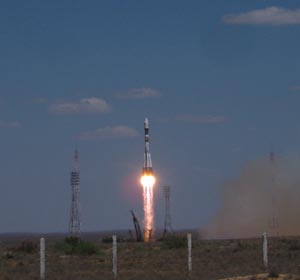On 15 June, at midday Moscow time, the Bajkonur Cosmodrome in Kazakhstan launched a Soyuz-TM2 rocket carrying the Russian satellite Resurs DK-1. This carried the Payload for Antimatter Matter Exploration and Light-nuclei Astrophysics (PAMELA), which will investigate antimatter and dark matter. A week later, the first scientific data were received, and after a series of tests on the satellite and all the on-board instruments, PAMELA entered continuous data-taking mode on 11 July.

PAMELA will stay in space for at least three years, on a 70° elliptic orbit at an altitude of 300–600 km. Its instruments will measure the flux, energy and characteristics of extragalactic, galactic, solar and interplanetary cosmic rays; it will also investigate dark matter and antimatter in cosmic radiation. More specifically, it will measure cosmic-ray antiproton and positron spectra over the largest energy range ever achieved and will search for antinuclei with unprecedented sensitivity. It will also measure the light nuclear component of cosmic rays and explore phenomena connected with solar and terrestrial physics.
The payload, which is 1.3 m high and weighs 470 kg, consists of a magnetic spectrometer comprising a silicon tracker in a 0.48 T field produced by a permanent magnet, together with a time-of-flight system, an electromagnetic silicon tungsten calorimeter, a “shower-tail catcher” scintillator and a neutron detector, all of which are shielded by an anticoincidence system. Transmission of data takes place several times a day (one complete orbit lasts about 90 minutes) through a telemetry system connected to a main ground station in Moscow. Data are then forwarded to the participating institutes through high-speed connections: an average of 10–20 GB a day (both engineering and scientific information) are collected and transmitted when PAMELA is fully operating.
PAMELA is the result of a collaboration between the Italian National Institute of Nuclear Physics and the Russian Space Agency and research institutes, with the contribution of the Italian Space Agency, and participation in particular of the Swedish Space Agency, the Royal Institute of Technology in Stockholm, the German Space Agency and the University of Siegen, as well as institutes in India and the US. PAMELA is also a recognized experiment, RE2B, at CERN. Tests were conducted in beams at CERN and elsewhere on prototypes, as well as on the detectors in the final flight configuration.





